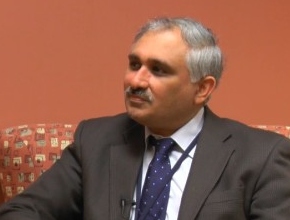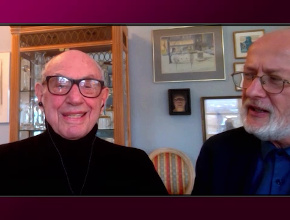Related McMaster Perspective episodes
Guyatt G, Jaeschke R. Medical opioid controversy. Part 1.References
Busse JW, Craigie S, Juurlink DN, et al. Guideline for opioid therapy and chronic noncancer pain. CMAJ. 2017 May 8;189(18):E659-E666. doi: 10.1503/cmaj.170363. PubMed PMID: 28483845; PubMed Central PMCID: PMC5422149.Roman Jaeschke, MD: Good morning. Welcome to another edition of McMaster Perspective. Let me reintroduce Professor Gordon Guyatt, whom we know from previous contributions to McMaster Perspective. Gordon, several months ago we were talking about your preparation for Canadian practice guidelines on opioid use. Could you update us on what has happened in the meantime? In the previous episode we were talking just about the process, not about the guidelines themselves.
Gordon Guyatt, MD: Would you like me to summarize the key messages from the guidelines?
Roman Jaeschke: How about we start that way.
Gordon Guyatt: We have quite high-quality evidence regarding the benefits of opioid use versus no opioid use. And the answer is, over the long term they are small. So if you take a 10-cm scale where 10 is the worst pain imaginable and 0 is no pain, the mean effect of opioids from over 60 randomized trials is <1 cm. If you take long-term opioids versus not, your pain is less, but the magnitude of the effect is small.
We also know, in terms of the evidence, that the higher your dose of opioids, the more likely you are to die of opioid overdose. The risk is small, but it is appreciable. And there are risks of addiction.
When you put that together, we think that opioids are generally a poor choice over the long term. Short-term use for acute pain is a different idea but over the long term [it is a poor choice].
Nevertheless, there is a small number of people who are going to benefit from opioids; however, you should probably keep the dose limited, because the more you take, the higher the risks. So we make a strong recommendation for <90 morphine equivalents daily (MED) and a weak recommendation for <50 MED with the acknowledgment that there may be some exceptional individuals who would benefit from more. That is the key.
The other major issue is what happens to—what they call in a somewhat peculiar terminology from my point of view—legacy opioid users, those who for years have been taking lots of opioids. The evidence is low quality in this case. We do not know the benefits of continuing versus the benefits of decreasing or even discontinuing in people who are feeling and managing fine on this opioid dose. But there is certainly the possibility of benefits of reducing opioids and we make a weak recommendation for doing so.
In other words, any time when I say weak recommendation, the key is shared decision-making. In other words, the benefits and potential harms need to be discussed with the patient, and a joint decision needs to be made between the physician and the patient.
Roman Jaeschke: I have heard a number of practical messages. In de novo users of opioids you would strongly recommend not to go >90 MED, you would suggest not to go >50 MED, and you would suggest talking to patients about the relatively small effect which they can expect. I am quite surprised how small the effect is. Do we know how this compares to other pain medications?
Gordon Guyatt: Yes. Excellent question. The evidence is low quality. There have been lots of comparisons of opioids to placebo, and there have been much fewer comparisons of opioids to other drugs. The ones that are there suggest that when you are talking about the long term—I think we must always bear in mind the difference between acute pain and long-term use—the effects are similar in terms of opioids versus nonopioid treatment.
Roman Jaeschke: And nonopioid treatment would be mostly nonsteroidal drugs.
Gordon Guyatt: They could be nonsteroidal drugs, ibuprofen, or anticonvulsant type of medications that are used for pain. Could be more or less anything that you could think of.
Roman Jaeschke: The reasonable comparison would be to use some sort of pain control and then add opioids.
Gordon Guyatt: Yes. One of our strong recommendations is not to use opioids first, to use other medication. If you are going to use opioids, only use them when other medications have not resulted in satisfactory pain control.
 English
English
 Español
Español
 українська
українська











